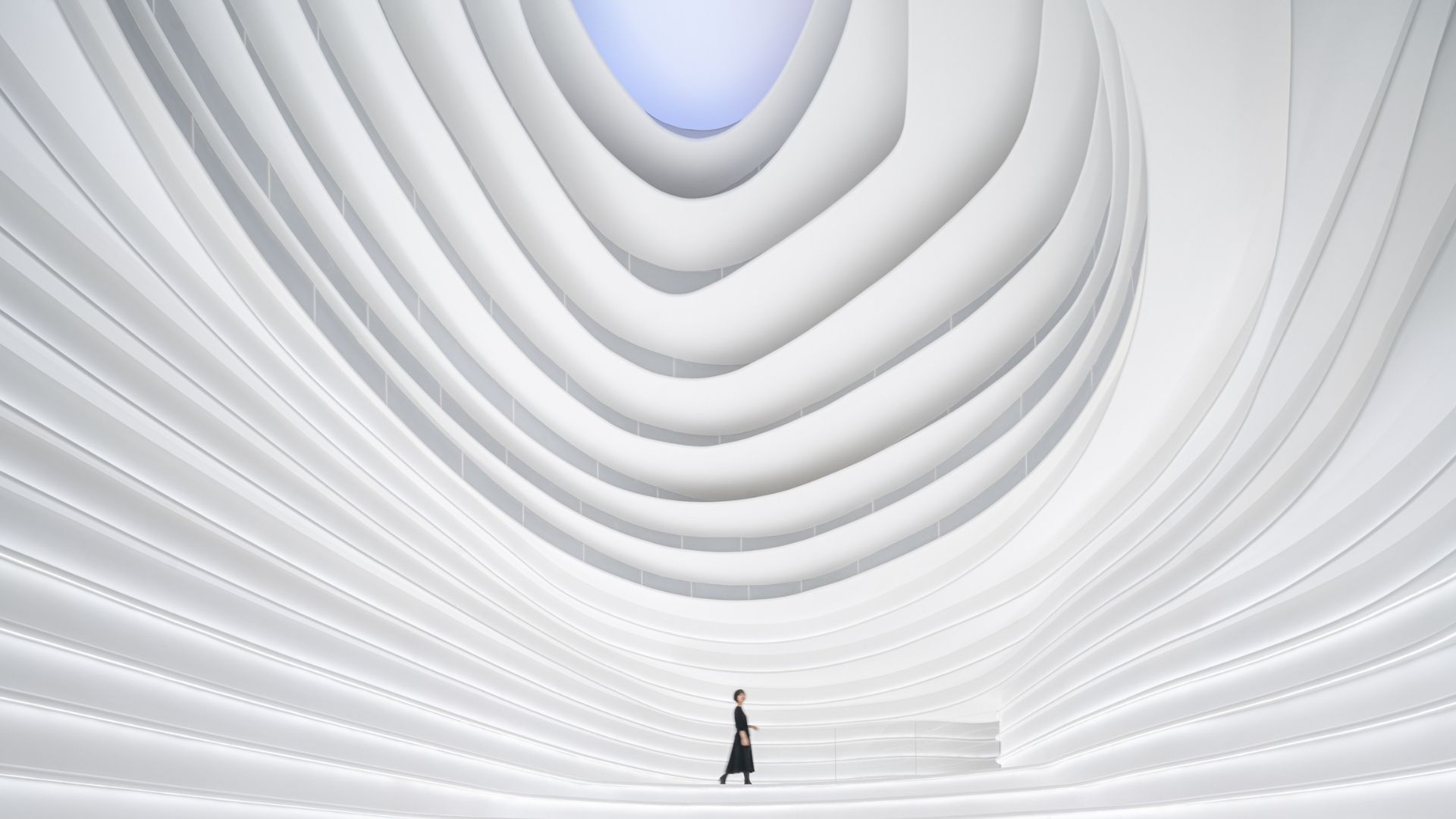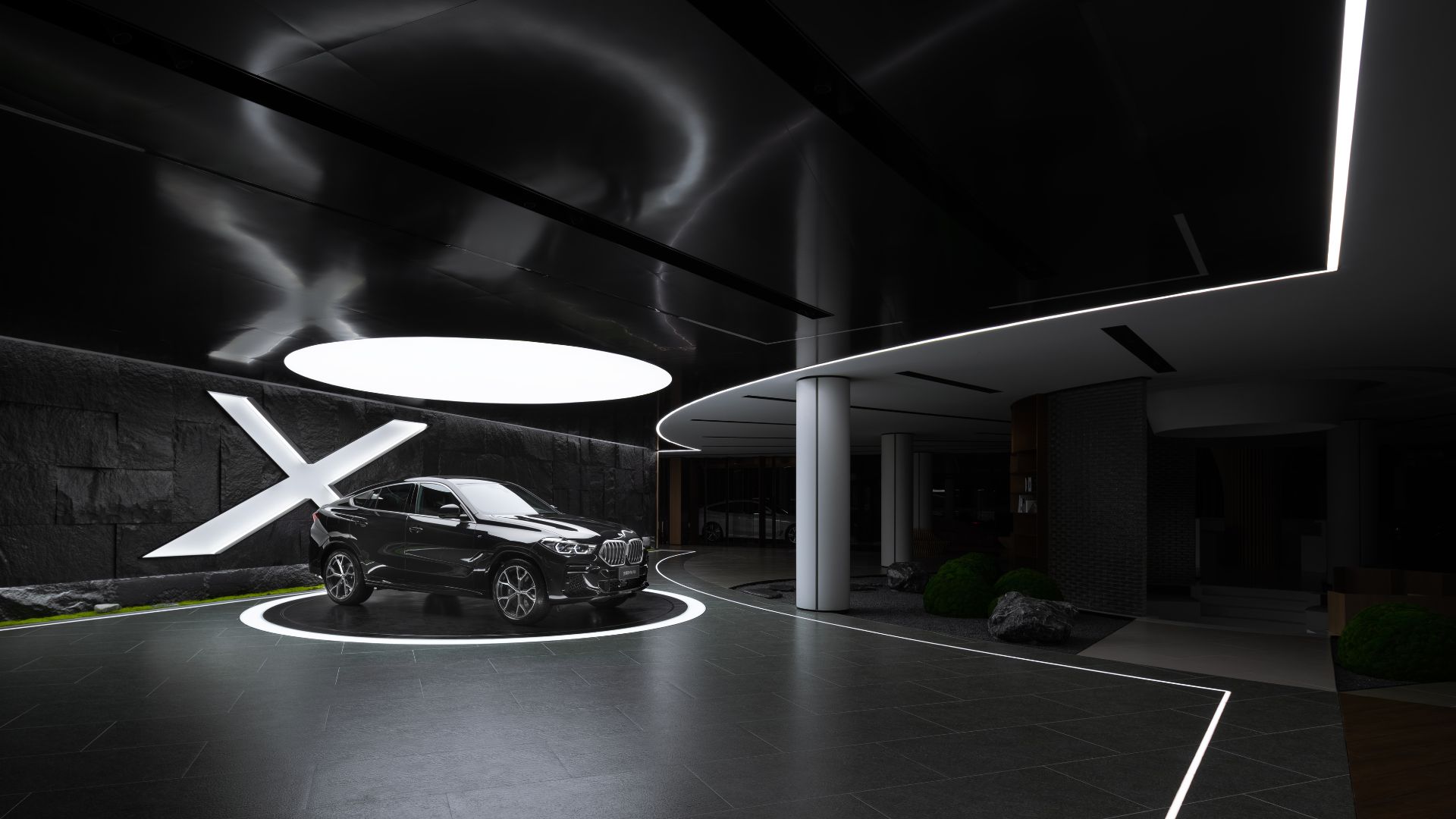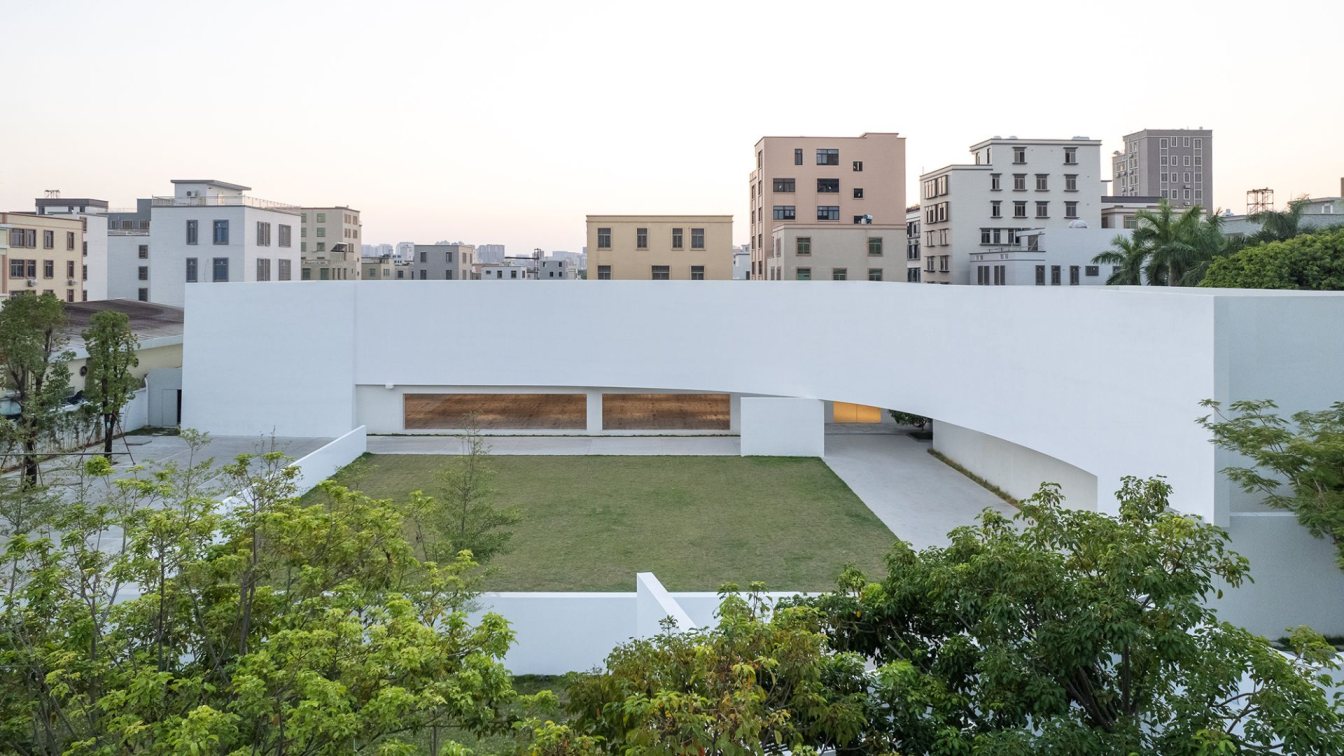PINES ARCH: 2022: Golong Wormhole is an experimental space for events and exhibitions at the Golong Holdings headquarter building in Hangzhou, China. The space allows for flexible programming, while maintaining a consistent visual language that represents the inquisitive and transformative brand culture of Golong, a beauty and wellness conglomerate.
The wormhole:
In 2022: Golong Wormhole, there are three interdependent and interconnected gallery spaces. The wormhole, an immersive space tying all galleries together, is the focal point of the exhibition. As the only part of the exhibition space that is not rectilinear, the sinuous elements extend and undulate from the foot of the shell-like installation to the very top, blurring the traditional definitions of what constitutes a room. The space is imbued with motion and speed, possibly submerging some unseemly visitors in an uneasy sensation that challenges the known and unknown about wormholes in our galaxy. The wormhole is interpreted as a sculpture that encompasses the viewer, enhancing their awareness and provoking their senses about light, form, and scale. It invites the viewer to be suspended in a reality in which the viewer takes on the role of an intrusive explorer, actively trying to measure and to interpret. During events, the wormhole comfortably seats around 60 people on the steps. On days without events, the wormhole is a space that employees would come to contemplate and unwind.
The wormhole is constructed of a structural frame made of galvanized steel studs that are welded on-site after a deliberate layout placement is done by projecting curves onto a grid. Fiber-cement backerboard is then used to line the frame, and precast GRC panels made specifically for each curvature are installed. From a secondary steel frame bolted into the floor slab above, steel cables hang rings of molded GRC panels on the upper portion of the wormhole shell. Frosted strips of bent acrylic is then slotted in between the suspended panels to create the translucent face panels.
Galleries:
On both ends of the central wormhole, there are gallery spaces for agile programming needs. Unlike the wormhole, the galleries act as an anchor to the familiar, layering the latent and the seemingly banal. The grid present in the coffered ceiling is symbolic of a shared consciousness. It is measured and standardized, the existence of the grid is a calculated act of topography. The walls of the galleries are plastered by hand, whereas the floors are made of polished epoxy. The rotating partition in the west gallery is used to configure spatial divisions, creating changing boundaries based on programming needs and occasion. The rotating partition is equipped with electrical sockets and a hidden water inlet to function as a bar or a coffee stand during events. The gallery spaces can be subdivided by automatic glass partitions that are hidden into a pocket wall. The pocket wall is built to be a half wall, so the coffered ceiling is allowed to extend beyond.
Spacetime tunnels:
Three freestanding tunnels exist within the “in between” realms that separate the wormhole and the galleries, hovering slightly above ground. The tunnels act like conveyor belts, linearly transporting those who travel through it. It is as though one’s freewill is temporarily surrendered to their robotic forward movement. As the visitor wanders through the dark tunnel, the darkness heightens their awareness, stretching and distorting their perception of time and space.
Outro:
In 2022: Golong Wormhole, the spaces are intentionally created to "contain" a blank slate, in which any human presence or activity would colonize the spaces and create contexts of its own.










About
PINES ARCH was founded in 2019 by Shuni Wu (MSAAD, Columbia University) and Evelyn Jingjie Wong (MSARCH, Illinois Institute of Technology) as an international architects’ collective. As a project, PINES ARCH operates within a spiritual order rooted in the traditions of S.R. Crown Hall. As a practice, PINES ARCH is constantly exploring the contexts presented by its zeitgeist, pursuing an ultimate mission to be concise, truthful and clear in its form of expression, interpreting and re-interpreting what it takes to make “Honest Architecture”.
PINES ARCH understands as digital natives that much of everything will eventually be “ideal”, but amorphous. Only when responding to the spirit of the times attentively can we as architects be part of it. As builders, PINES ARCH resides in its social environment with a critical mind, consciously and rationally returning much control over to the integrity of materials and tectonics. PINES ARCH avoids superfluous creation by closely observing, actively understanding and explicitly responding, so as to seek only the essentials. The establishment of this constant introspective dialogue is fundamental for PINES ARCH as architects, designers, builders and thinkers operating in our times.
PINES ARCH works in Architecture, Urbanism, and Interior Design. Projects include the 35-acre masterplan, architecture, and interior design of The Jade Huathai Resort in Huahin, Thailand; Golong Holdings Headquarters in Hangzhou with 10,000 square meters office and exhibition space; the first brick-and-mortar retail store in China for Spanish skincare brand SEPAI; Volunteer Dormitory and Tea Room for The Shanghai Flower Expo in 2021; Vailog Group Luxury Apartment Sales Room; Shanghai Galaxy Midtown Sales Department; The soft decoration design for Guizhou Baohe COSMOS Sales Center, and the third place winner in the National Maritime Museum of China-Huangpu New Wing competition.





